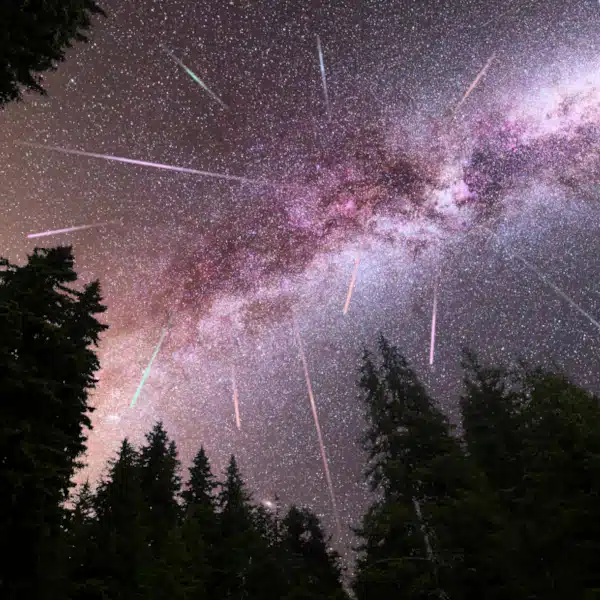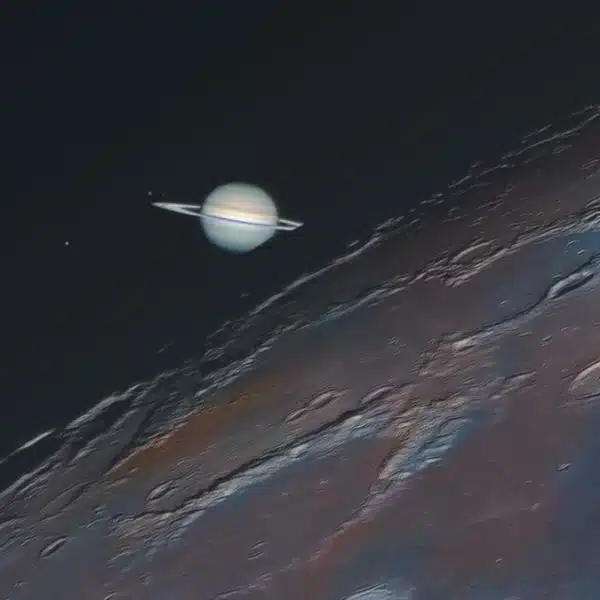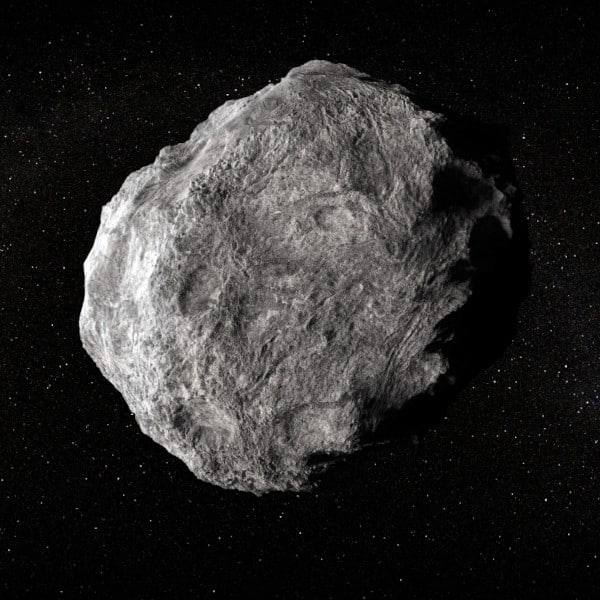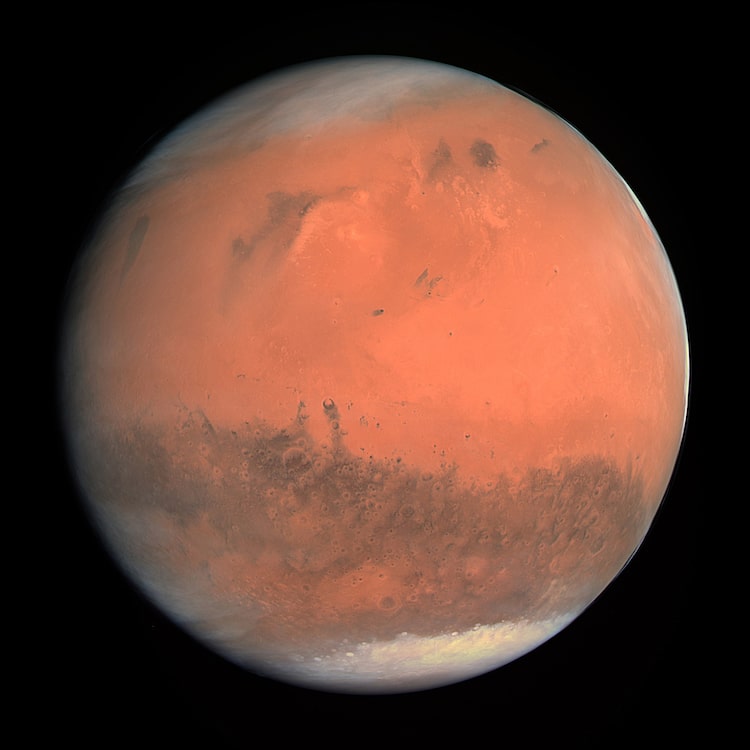
Photo: NASA
As one of our two neighbors, Mars has piqued the interest of humans for centuries. Also known as the Red Planet, it's the subject of intense study by NASA, which hopes to soon send astronauts to the planet for research purposes. Easily visible in the sky from Earth, sightings of Mars have been recorded dating back to ancient Egyptian astronomers. Since that time, there is so much that we've learned and discovered about our neighbor. But how many facts about Mars are you familiar with?
If you're struggling to remember your elementary science class knowledge or would like an excuse to explore the Solar System more deeply, we've put together a list of facts that will leave you feeling like you know the Red Planet a little bit better. From how Mars got its name to why it's home to the Solar System's largest mountain, there's a little bit of everything.
Learn more about the Red Planet with this list of facts about Mars.
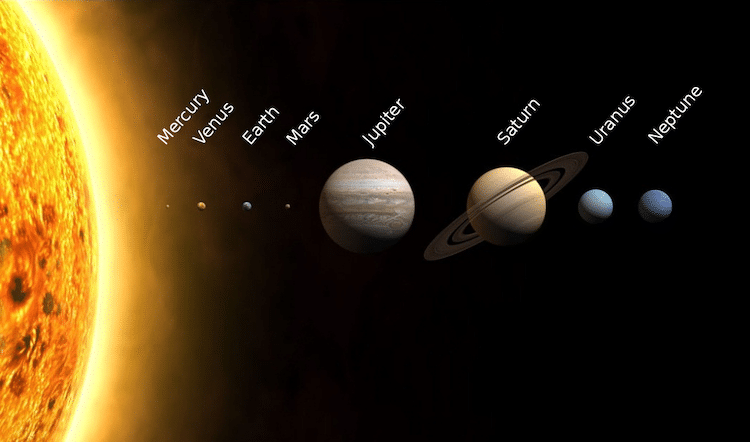
Photo: WP, CC BY-SA 3.0, via Wikimedia Commons
Position
Mars is the fourth planet from the Sun, sitting between Earth and Jupiter. On average it's about 142 million miles from the Sun.
The distance between Earth and our neighbor Mars varies greatly depending on where both planets are in their orbit. In theory, at their closest, they could be 33.9 million miles apart—but that's never happened in recorded history. Instead, the current record for closest distance is 34.8 million miles, which happened in 2003. And when these neighbors are far, they're very far—about 250 million miles.
Size
For a planet that holds so much importance in the Solar System, and that humans are investing a lot in, Mars is actually rather small. In fact, only Mercury is smaller than the Red Planet. Measuring about half the size of Earth, Mars has a diameter of 4,220 miles.
Interestingly, due to all the water on Earth, our planet has the same landmass as Mars.
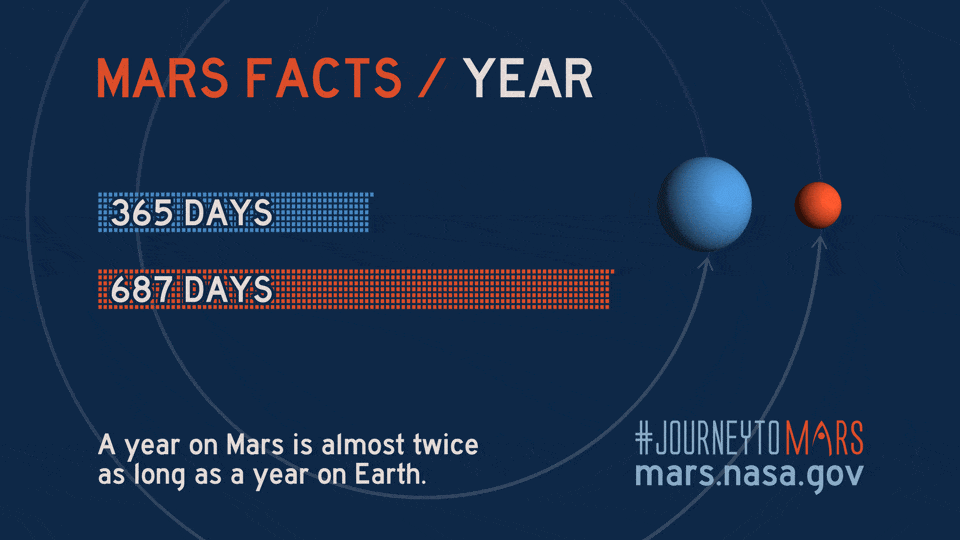
Time
Time works a little differently on Mars, but it's actually not too far off from what we're used to. Martian days are called sols and one sol is about 40 minutes longer than a day on Earth. Instead, a Martian year is quite different—it's almost twice as long as one Earth year. It takes 687 Earth days to complete one year on Mars.
The difference in time is due to the fact that Mars moves a little slower in its orbit around the Sun and, as it's farther away, has a longer trajectory.
Name
Mars takes its name from Roman mythology. Its red appearance inspired the Romans to name it after their god of war, just as the Greeks had done previously when they called it Ares. In fact, in modern Greek, the planet is still called its ancient name—Ares.
Unsurprisingly, Mars' red color inspired a lot of different cultures. For instance, ancient Egyptian priests called it Her Desher, which means “the red one.” And the Chinese name for Mars translates to “fire star.”
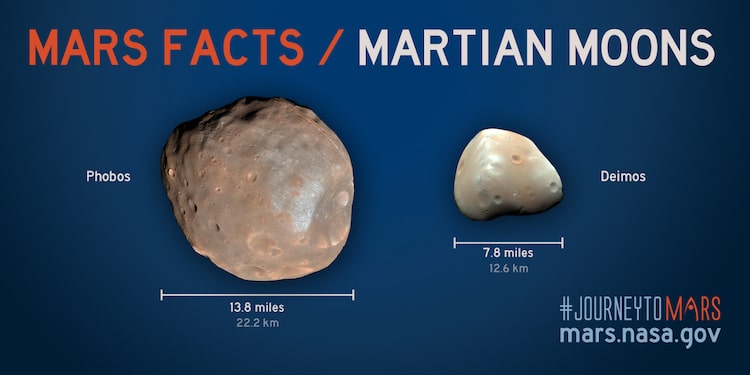
Moons
Mars has two small moons named Phobos and Deimos. Phobos is just 14 miles in diameter, while Deimos is a little over 7.5 miles in diameter. While we aren't exactly sure of their origins, there's a good amount of evidence that they might be captured asteroids. Their lumpy, irregular appearances, as well as low densities, are just some signs of this possible origin.
Phobos and Deimos were discovered in 1877 by American astronomer Asaph Hall and were named after gods from Greek mythology. In keeping with Mars' ancient name Ares, Phobos and Deimos are actually the sons of the god of war. Phobos is the personification of panic and fear, while Deimos is the god of terror and dread.

Topographic view of Valles Marineris. (Photo: NASA)
Terrain
Mars is a terrestrial planet with a solid surface, which has a rusty tinge. This red color is due to the large quantities of iron oxide on the surface. Mars holds the record for both the highest peak and deepest valley on a planet in the Solar System. Measuring about three times the height of Mount Everest, Olympus Mons is 17 miles tall. Olympus Mons also happens to be a volcano, one of many found on Mars. Valles Marineris, which was discovered by the Mariner 9 probe in 1971, runs as deep as six miles and stretches about one-fifth of the way around the planet—practically the width of Australia.
Atmosphere
Carbon dioxide is the primary component of Mars' atmosphere. It makes up 95%, with the rest a mixture of Argon, Nitrogen, and other materials. Mars' atmosphere is very thin in comparison to Earth's and gravity is 37% of what it is on Earth. That means that you would be able to leap three times higher on the Red Planet. This thin atmosphere also means that liquid water would be very difficult to find on the surface. Researchers believe that Mars had a thicker atmosphere in the past, which would have allowed water to flow.
The thin atmosphere, and lower gravity, also allows for some spectacular landmarks. Mars can host exceedingly tall mountains and volcanos because this low gravity doesn't cause them to collapse even when reaching incredible heights.
Related Articles:
NASA’s Photo Shows Mars’ Grand Canyon in Spectacular Detail
Take a Look at the Most Detailed Map of Mars Photographed From Earth
NASA Releases Breathtaking Image of Rolling Blue Dunes on Mars
NASA Ingenuity Continues To Make History With First Color Aerial Photo of Mars











































































